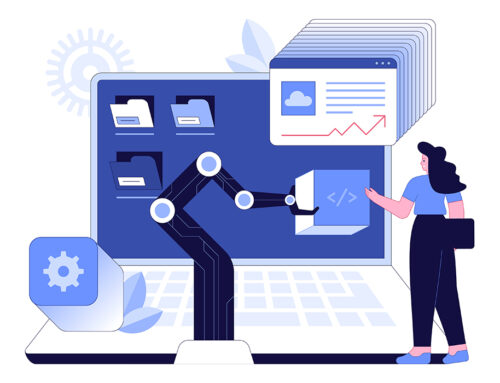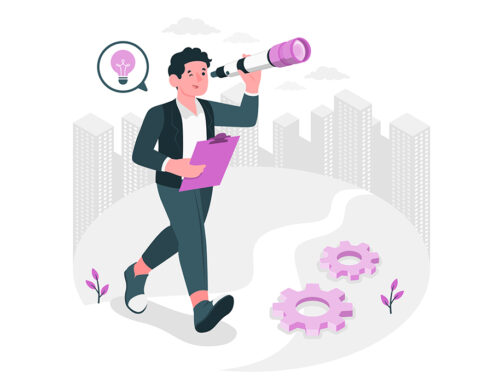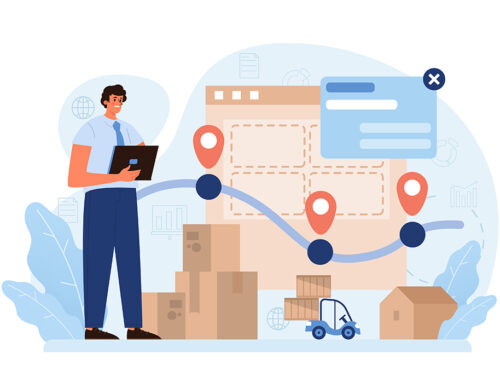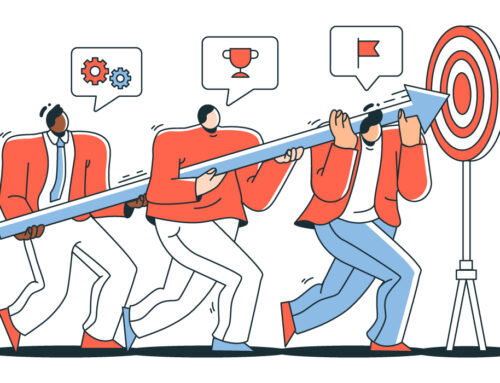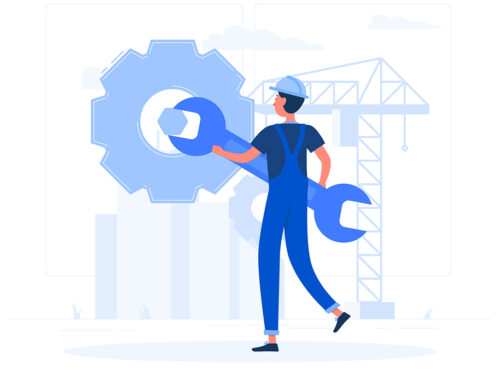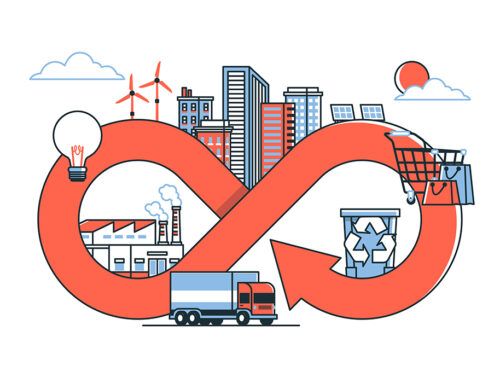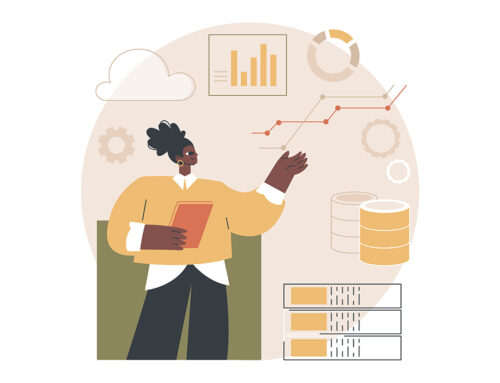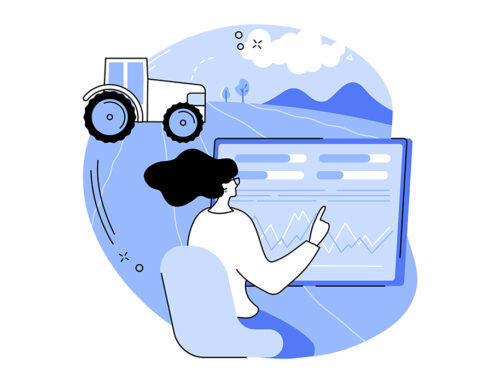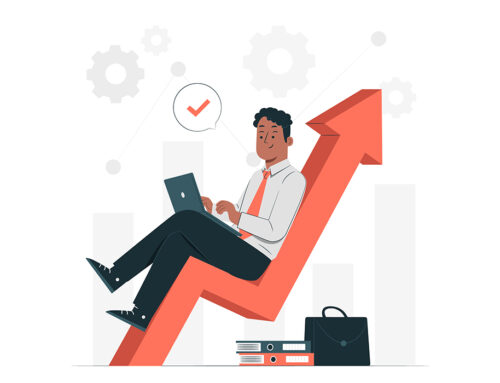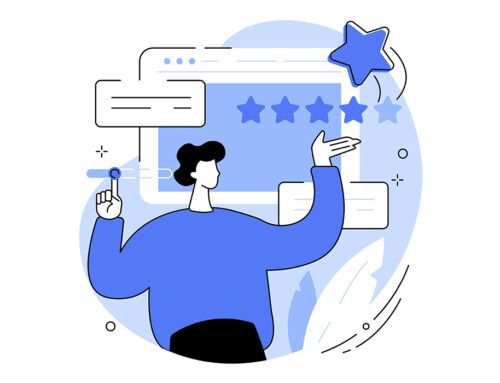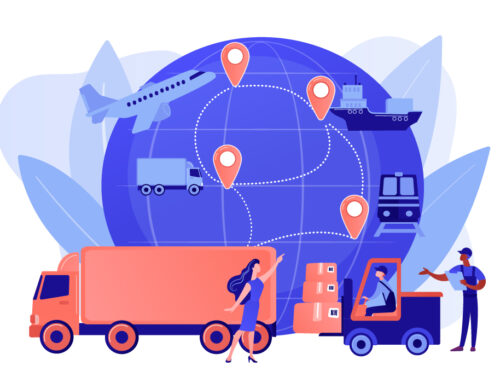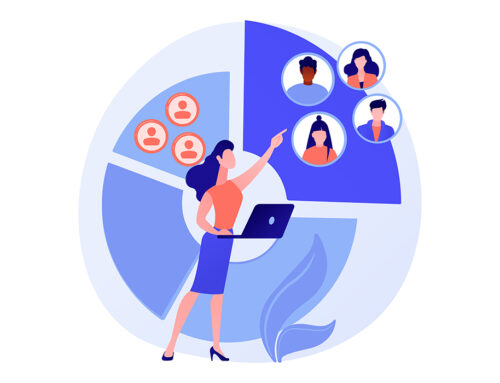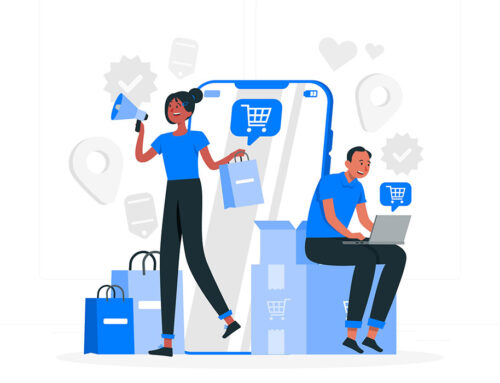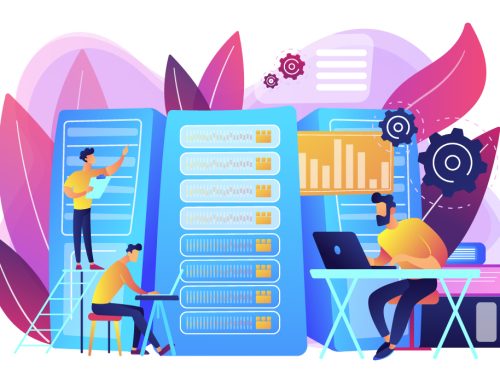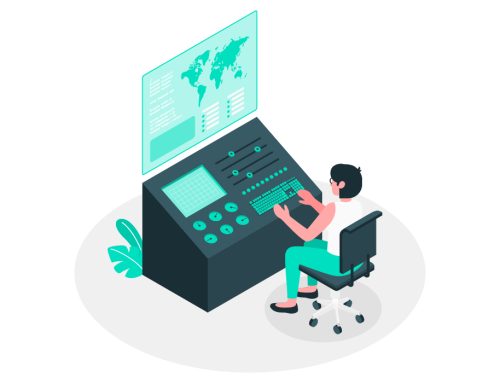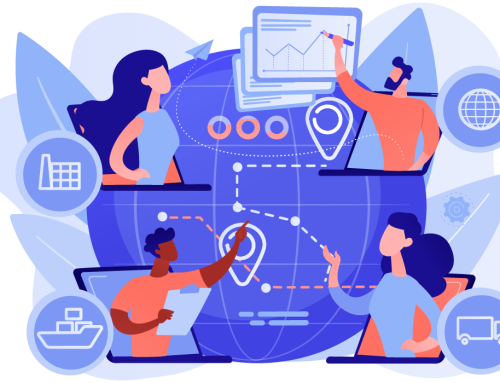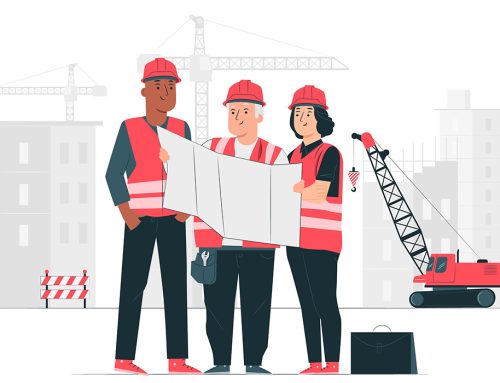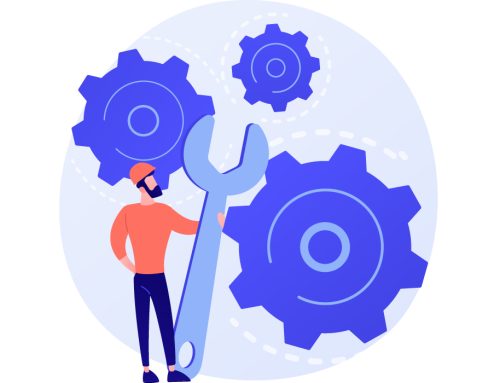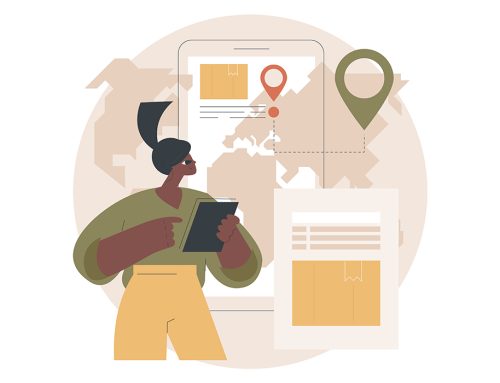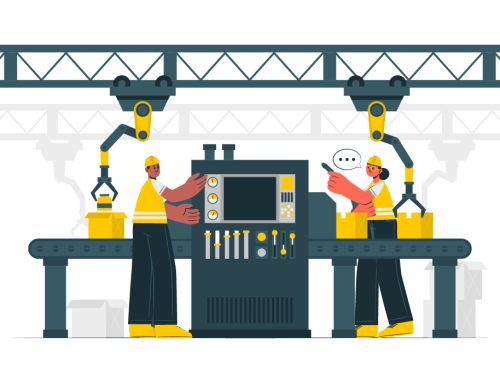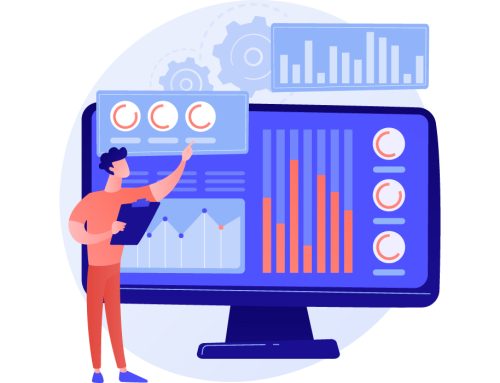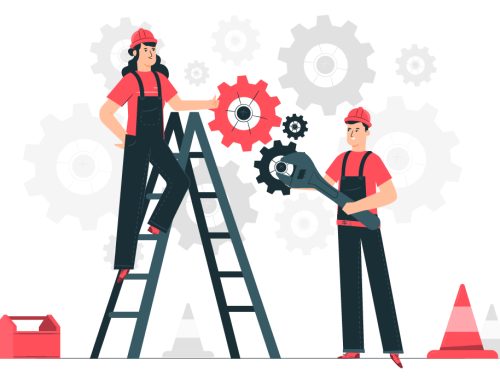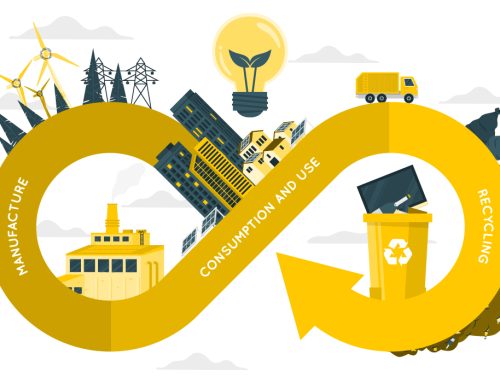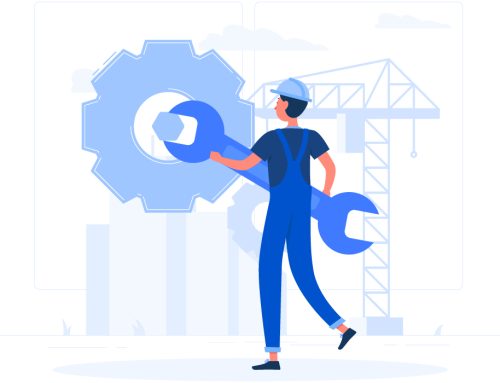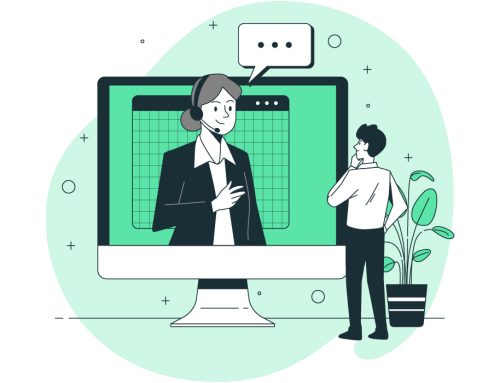At the 2024 Aftermarket Power of 50 event in Copenhagen, industry experts gathered to explore one of the most pressing challenges in the aftermarket today: how to truly embed customer centricity into service organizations to create long-term value.
Author Radiana Pit | Copperberg

Photo: Freepik
In an engaging panel moderated by Lisa Hellqvist, Managing Director of Copperberg, three leaders shared their insights, experiences, and strategies for bridging the gap between customer-centric ideals and practical objectives. Joining Hellqvist on stage were:
- Navè Orgad, Director of Advanced Services at Konecranes Port Services
- Anna Jern-Houttu, Vice President of Service Solutions at Kalmar
- Jason Moore, Head of Global Aftermarket Solutions and Sales Enablement at Grundfos
Each panelist drew on their organization’s unique journey toward enhancing customer value through service solutions, addressing the difficulties of organizational change, the evolving role of data, and the impact of customer demands on sustainability efforts.
Key Takeaways
- Bridge the gap: True customer centricity means involving customers directly in service design, not just relying on internal assumptions.
- Create a service-first culture: Moving from product-centric to service-driven mindsets requires leadership commitment and a willingness to break down silos.
- Anticipate customer needs: Partnership with customers often means understanding their needs better than they do and offering proactive guidance.
- Leverage data strategically: Transform data into actionable insights for predictive and personalized service, focusing on real outcomes.
- Foster cross-functional collaboration: Servitization depends on departments working together, breaking down traditional boundaries to meet customer needs.
- Invest in a comprehensive skill set: Beyond technical skills, service organizations need salespeople, data analysts, and solution-oriented mindsets.
- Respond to sustainability demands: Incorporate sustainable practices into service offerings, recognizing that regulatory demands often drive these changes.
The Gap: Between Aspiration and Reality in Customer-Centric Servitization
Customer-centricity is often presented as the key to long-term business success, with research showing that customer-focused companies are 60% more profitable than those that aren’t. However, as businesses increasingly turn to servitization, the journey to genuinely becoming customer-centric is not without its challenges. The panelists discussed the significant gap between the desire to put customers first and the practical aspects that many organizations face in doing so.
Addressing this disconnect, Navè Orgad stated: “In any company, they always say ‘customer first,’ but in reality, there’s a gap. It’s difficult to translate that aspiration into concrete facts.” He explained that while companies may claim to prioritize their customers, they often fall short in delivering on this promise. Long delays in quotations, difficulties sourcing spare parts, and the inability to fulfill service promises are just a few examples of how this gap shows up in practice. The real issue, he pointed out, is that companies rarely engage customers directly enough to co-create solutions that truly meet their needs.
Anna Jern-Houttu added that customer centricity shouldn’t be about satisfying every customer request. While customer-centricity is key, “building across silos—product, service, and R&D—to meet the customer as one partner” is equally important. Jern-Houttu made the case that while the customer’s needs are paramount, organizations often struggle to align different departments to deliver a unified customer experience. Bridging these internal silos is a key part of the challenge.
For Jason Moore, who comes from an OEM (original equipment manufacturer) background, the shift from a product-based business to a service-focused one is particularly tough. “If you’re an OEM manufacturer, you’re probably pretty good at understanding your customers’ needs from a product perspective,” Moore said. “But when we move into the aftermarket and service, it becomes a lot more challenging to understand the customer’s needs and pains.” Moore explained that when companies transition from selling products to offering services, they face new questions: What are the service-level agreements (SLAs)? What is the right level of support for customers post-purchase?
For well-established product manufacturers, known for engineering excellence, this is also a legacy problem. As per Moore’s example, “Grundfos makes great pumps—probably the best in the world. But their focus has always been on the product. To start that journey into services is a huge cultural change.” He explained that changing an organization’s mindset, particularly one focused on product engineering, requires top-down support and a clear commitment to service as part of the business model. Without this, sales teams may continue to prioritize transactional sales over long-term customer relationships.
Adding to this, Anna Jern-Houttu stated that being service-focused is being customer-centric: “Service and the aftermarket are about making sure the product is doing the right thing for the customer, making their operations run in the right way,” emphasizing that the product remains valuable over time through ongoing service and support.
All panelists agreed that while many companies aspire to be customer-centric, turning that vision into reality is a complex and often difficult journey. The gap between aspiration and reality is wide, particularly for organizations making the shift from product sales to service offerings.
Defining Customer Service: A Framework for Genuine Customer-Centricity
The true meaning of customer centricity varies depending on who you ask. As organizations strive to make the servitization shift, they are challenged to define and structure customer service in a way that truly meets evolving expectations.
Navè Orgad revealed that his organization’s customer-centricity strategy “is providing what the customer needs at any point in time to help them achieve their business objectives.” The focus is on constant communication with the customer. “We need to ask our customers more frequently what they need. That way, we have a clear guiding star to move toward,” he said. He emphasized that the goal is not only to meet the customer’s current needs but to also anticipate where those needs might evolve over time. However, internal challenges, like silos between departments, often prevent a company from delivering on its promises. “Internal struggles limit our ability to be truly customer-centric,” he said, acknowledging the ongoing need for better cross-departmental collaboration.
The solution, as Anna Jern-Houttu pointed out, is organizational alignment. “We’re looking at ways of working that bring departments together,” she shared. The key is understanding exactly what the customer is asking for and ensuring all teams—from product development to service—are aligned to meet those needs. One method her organization started using is value stream mapping, a process designed to uncover inefficiencies in workflows and ensure that the value provided to the customer flows seamlessly across departments.
However, Jason Moore pointed out that before defining customer service, it’s important to define the customer. “We sell to OEMs, channel distributors, and end users,” he explained. “And each of those customer types has different pain points and needs.” From energy plants to wind turbine manufacturers, Moore described the complexity of servicing a wide range of customers, each with their own unique set of requirements. “Mapping out every part of that is a never-ending task,” Moore said. A diverse customer base requires an ongoing, tailored approach, and that means recognizing that no two customers are the same.
24/7 Service Expectations: The Challenge of Meeting Digital Demands
The pandemic taught organizations many lessons about adaptability, particularly in how service can be delivered remotely and through multiple digital channels. But these lessons for what was a crisis situation have become new standards. Customers now demand 24/7 access, immediate support, and self-service solutions. How are organizations adapting their service offerings to meet these new and evolving customer needs?
Jason Moore pointed out that whilst not all customers are demanding 24/7 service right now, it is an emerging trend to prepare for. “We have to try to be ahead of the curve, to serve before that demand starts coming towards us,” he said, emphasizing the importance of anticipating trends rather than reacting to them. Whilst this proactive approach is essential, Moore also stressed that translating customer needs into digital products is a complex task. “We’ve developed digital products we thought were great, only to take them to market and realize they weren’t what customers wanted,” he explained. Therefore, interpreting and anticipating future needs and where the market is heading should be a priority.
Navè Orgad further explained that the gap between what customers think they want and what they’re truly ready to adopt is quite big. “There’s a lot of theoretical demand for new technologies like AI, machine learning, and predictive maintenance,” Orgad said. The buzzwords are everywhere, but when it comes time for actual implementation, many customers hesitate. “The market is still quite conservative, and customers are risk-averse. They prefer to stick with traditional ways of doing things,” he said. This gap between theory and reality is something Orgad has seen time and time again. While customers express interest in cutting-edge solutions, they often shy away from adopting them. “They say they want it, but when it comes to deploying new solutions, they’re not ready to take that step,” Orgad continued.
However, 24/7 service is a necessity in some sectors where ports or terminals demand continuous service, and machines can’t afford to break down during off-hours because the stakes are too high. As Anna Jern-Houttu remarked: “If something fails in the middle of the night, we need to respond immediately.” This pressure, she noted, is driving the need for more responsive and accessible support services.
Breaking Down Silos: Organizational Alignment in Servitization
Servitization cannot be fully functional without cross-departmental collaboration. But aligning different departments—especially in organizations with long histories of product-centric operations—can be a daunting challenge. How are organizations bridging these internal gaps to build a more cohesive, service-oriented culture?
Jason Moore noted that while younger companies are often more agile in embracing new business models, established organizations find it difficult to pivot. “There’s a ‘this is how it’s always been done’ mentality,” he explained.
Sharing the same thought, Navè Orgad explained that “internal alignment between new equipment and services is historically not great, but it’s improving.” However, he believes that including service in every new equipment deal helps. By introducing service offerings at the point of sale, companies can begin to integrate servitization into the customer journey. Orgad also highlighted the importance of creating financial incentives to encourage sales teams to offer services alongside equipment. “Push incentives for equipment sales to also present or build service cases,” he advised, noting that this approach can be a powerful tool for driving service adoption and reinforcing the value of service within the broader sales strategy.
Anna Jern-Houttu also noted that “Every organization is so complex at this moment,” pointing to the variety of services and products businesses must juggle across multiple regions and functions. The key to overcoming this fragmentation is what she refers to as “extreme ownership.” Rather than staying confined to their defined roles, teams are encouraged to go beyond and break down silos. “If the customer needs it, you need to go above and beyond,” she said. This philosophy encourages cross-functional teamwork and a more collaborative, flexible approach to problem-solving, especially when the stakes are high and customer expectations demand a seamless experience.
Service Innovation: Data-Driven Predictive Maintenance
The so-called “Holy Grail” of service innovation is predictive maintenance. But is it just an ideal or a tangible goal? Undoubtedly, data is essential to create personalized services. However, not all maintenance issues can be predicted. So, how can companies leverage data to offer tailored solutions?
Drawing from his experience in the wind energy sector, Jason Moore shared how powerful real-time data can be when used effectively. At Siemens Wind Power, turbines were equipped with sensors that provided real-time data on performance. The data insights helped both Siemens and the customers monitor the turbines, enabling them to predict failures, such as a motor malfunction or turbine downtime, and take preventive action. This capability allowed the company to offer uptime guarantees, which were crucial in an industry where downtime could lead to major financial losses. However, Moore noted that other industries still have a long way to go in leveraging real-time data.
While data is abundant across industries and sectors, its real value lies in how companies use it. “Data is a commodity today,” Navè Orgad remarked. But its true potential is unlocked when it drives actionable insights. At Konecranes, Orgad’s team is working toward predictive maintenance for meaningful outcomes. For example, by using data to predict and prevent unplanned downtime, Konecranes aims to meet the basic but vital need of keeping machinery operational.
Anna Jern-Houttu also shared that Kalmar uses data to recommend specific parts to customers based on equipment age, running hours, and installation base. This helps customers order parts before they become critical. Kalmar is also using AI to enhance this process and create a more personalized, data-driven service model. While it’s a step forward, Houttu pointed out that there is still more to be done to fully leverage data for predictive and preventative services.
The Talent Shift: Building a Service-Selling Culture
If businesses are to become truly customer-centric, they must evolve beyond traditional service models. To effectively move toward a service-selling culture, organizations will need to cultivate new skills within their teams. What talents and capabilities will be essential to establish this shift in mindset?
Moore explained that developing a service-selling culture requires a holistic approach across the entire value chain that integrates service delivery, sales, and product management into a cohesive business model. He also stressed the importance of having not only technically skilled service professionals but also the right sales talent to sell the value of these services to customers. As he put it: “You can’t just train your service technicians to be the best at what they do. If you don’t have a sales team that can sell that value, you’re not going to achieve your goals.”
For Anna Jern-Houttu, there are two key attributes for this shift: endurance and active listening. In her view, endurance refers to the long-term commitment needed in creating relationships with customers, which is necessary not only for building trust but also for navigating complex sales cycles in which understanding the customer’s evolving needs is paramount. However, endurance alone isn’t enough. Organizations also need the ability to truly listen to customers, understanding not just what they say, but what they actually need and want. In this service-selling model, the role of the service provider is not to push products or solutions but to hear the customer’s challenges and provide the right long-term solutions. As Jern-Houttu succinctly put it, the focus is on “listening more and talking less.”
For teams focusing on transactional equipment sales, introducing service and solution-selling is a challenge. Some professionals, particularly those in long-standing technical or product-based roles, may struggle with the mindset change. Orgad stressed that “a few training webinars won’t do the trick” because solution selling isn’t just a different skill set but a different way of thinking. And not everyone is equipped for that transformation. Orgad explained that it’s a process that requires careful selection and upskilling of individuals who have the potential to make this shift and adapt to the demands of a more customer-centric, solution-based sales model.
Sustainability: Green Customer-Centric Aftermarket Services
No longer a distant concern confined to corporate-level agendas, sustainability is now reaching deeper into departmental functions, driven by both regulatory requirements and customer demands. Customers, as Hellqvist noted, are requiring more transparency to help them with their Environmental, Social, and Governance (ESG) reporting, and with new regulations, such as the digital product passport and blockchain technology. How can aftermarket services help businesses adhere to these new sustainability demands? Are companies seeing more requests from customers to integrate sustainability into their offerings? And how are sustainability and ESG requirements influencing service models?
At Grundfos, the Energy Earnings service helps high-energy-consuming facilities, such as hotels, improve their efficiency. The program involves conducting an analysis and replacing inefficient pumps with newer, more energy-efficient models. Grundfos then enters into an agreement with the customer for a number of years, where energy savings are shared between the company and the client. In this arrangement, Grundfos not only supplies the energy-efficient pumps but also provides ongoing maintenance to ensure optimal performance, making it both a sustainable product and a long-term service agreement.
Moore highlighted that this model reduces CO2 emissions and energy costs for the customer, which makes it a “no-brainer” in terms of value proposition. The model also creates a continuous, ongoing relationship with the customer, positioning the service company as a trusted partner for the long haul, rather than just a product supplier. Sustainability, in Moore’s view, is truly about embedding greener solutions into the long-term service framework that adds continuous value over time.
Although sustainability is a key topic for customers, it manifests in different ways across industries. One area pointed out by Anna Jern-Houttu is the transition from diesel-driven equipment to electric vehicles (EVs), which is part of the broader move toward more sustainable, low-emission solutions. For her, sustainability is synonymous with service longevity, which is central to the work her company does. By prolonging the lifecycle of equipment through refurbishment or upgrades, service organizations reduce the need for new products and thus minimize waste.
Kalmar also developed the EcoFlex model, which helps customers become more eco-efficient through education and incentivized programs and encourages customers to drive their equipment in eco-mode to lower their fuel consumption. If the customer chooses to use a higher power mode, the cost is higher, providing an economic incentive to choose more sustainable options. This model also proves that real sustainability progress requires full customer buy-in and commitment, from the fleet operators to the drivers themselves. The service model provides incentives, but ultimately, customer participation is critical.
There is an increasing demand for upgrading diesel equipment to electric or hybrid models. As Navè Orgad emphasized, this shift is driven primarily by regulatory compliance more than anything else. Many customers are motivated by regulations that require them to shift to cleaner technologies. This also drives the increased shift towards automation. Especially in container terminals, automation cuts down on fuel consumption because automated systems tend to operate more efficiently, preventing the fuel-wasting behaviors of human operators.
Future Outlook: Challenges and Opportunities Ahead
In wrapping up the insightful discussion, panelists shared the biggest challenges and opportunities they foresee in the future of customer-centric servitization, and how they believe organizations should prepare.
Many companies are still in the midst of their transformation journeys, with some further along than others. However, the universal goal observed by Navè Orgad is delivering value to customers. There is no silver bullet or one-size-fits-all solution to successfully navigating this transformation. What does seem to help, however, is the power of networking events like the Aftermarket Power of 50. These gatherings not only offer opportunities for networking but also create a space for sharing best practices, ideas, and experiences, which can accelerate the service transformation process. In Orgad’s view, collaboration and shared learning are essential to overcoming the challenges of servitization.
Another major challenge is getting people to work together across teams. While it’s easier to develop and change products, it’s significantly harder to shift the mindset and behaviors of people within an organization. The solution to this proposed by Anna Jern-Houttu is breaking down internal silos and ensuring that all teams align around a shared goal: to focus on the customer.
If an organization is serious about adopting servitization and becoming truly customer-centric, then the entire organization must be aligned and committed to that vision. As Jason Moore noted, without full buy-in from all functions—whether product, service, or sales—true transformation will be difficult to achieve. Organizational commitment is the key to making real, sustained progress.
From alignment across teams to fully embracing the servitization model, the panelists agreed that achieving customer-centric servitization is as much about internal transformation as it is about external customer satisfaction.

